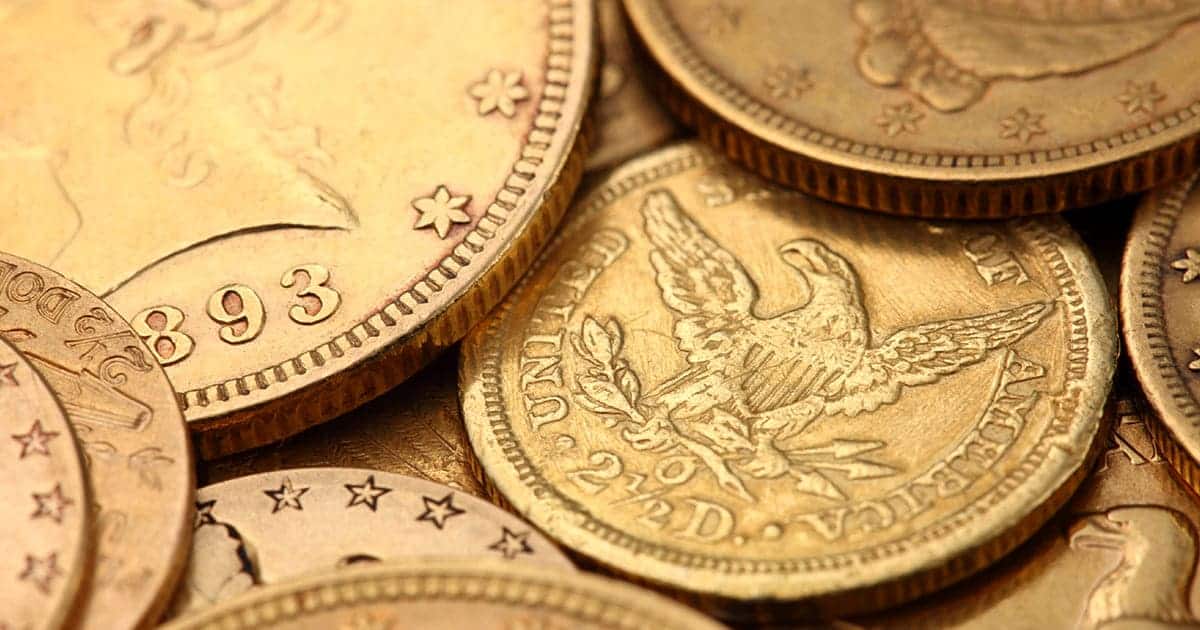
Gold Coinage and the United States Assay Office
Moffat & Company was dissolved in 1852 and Moffat’s partners Curtis, Perry and Ward took over the management of the company. The new company was named the United States Assay Office of Gold and they continued to strike private gold coinage in California.
The US Government’s response to providing coinage for California was never adequate and these private coinage companies filled the void. Their coins represented in many ways an “official” coinage for California.
In 1852, the United States Assay Office of Gold issued two different $50 “slugs” of different fineness in addition to issuing a $10 gold coin. The local merchants and bankers tried hard to persuade the minters to strike a $5.00 denomination coin so as to help relieve the coin shortage but the US Assay Office of California resisted striking the smaller denominations.
The two $50 Gold coins that were struck were exactly the same in design. Large and heavy (nearly 2.5 ounces) and octagonal in shape, they were impressive in their size and heft. Inside of a beaded circle is an American eagle with upraised wings, on a large rock, with a patriotic shield covering the eagle’s breast adorned the obverse of the coin. The eagle has a ribbon in its beak and above the eagle is a banner on which is the fineness “.887 THOUS.” Around the periphery of that beaded circle is “UNITED STATES OF AMERICA * FIFTY DOLLS.” Outside of that beaded circle, these words are imprinted on the outer periphery, “UNITED STATES ASSAY OFFICE OF GOLD SAN FRANCISCO CALIFORNIA 1852.”
The reverse is a geometric design of concentric circles that were added to deter counterfeiting.

The other $50 Slug has exactly the same obverse and reverse, except that the banner above the eagle states “900 THOUS.”

The smaller coin struck in 1852 was a $10.00 denomination gold coin. The obverse of this coin used a similar eagle to the $50 slug. The eagle has a banner in its beak with the word “LIBERTY” inscribed on it. The shield covering the eagle’s breast and the large rock are in place. The banner above the ribbon states “.884 THOUS” with “UNITED STATES OF AMERICA” around the upper periphery.
The reverse also has concentric rings used as a deterrent against counterfeiting. The reverse also has, on four lines in the center “UNITED STATES ASSAY / OFFICE OF GOLD/ SAN FRANCISCO/CALIFORNIA 1852.”

In 1853, two $10.00 Eagles were struck as well as two $20.00 Double Eagles were struck. The difference in each is the fineness – each denomination had both a .884 and a .900 fineness option.

The other $10.00 Eagle was a “.900 THOUS” option.

This Assay Office also struck two varieties of the $20.00 Double Eagle – one with “.884 THOUS” fineness and the other with “.900 THOUS” fineness.


These coins were truly necessary to provide at least some coinage for local merchants and bankers. But no smaller denominations of coinage would be forthcoming from the US Assay Office. For all of the benefits that the US Assay Office provided, a major setback occurred.
The federal government passed a law, applicable everywhere across the country, prohibiting the acceptance and use in commercial transactions utilizing coins of less than .900 fineness for customs dues or other payments to the federal government. The US Assay office had struck and distributed coins in the .880, .884 and .887 finenesses but the U. S. Government was concerned that the lower fineness might damage the reputation and creditworthiness of the United States if these coins were accepted for use in international trade. Even though the majority of the coins had a lower fineness, they contained a heavier weight of gold to compensate for the lower fineness.
But on December 14, 1853, the United States Assay Office of Gold for California ceased operations. The decision to close the business was not done easily but the principles understood that the new United States of America Branch Mint office in San Francisco, CA would attend to the coinage needs of the citizens and merchants of the state of California, as well as to the mining interests which had grown rapidly since the discovery of striking gold in 1849. The old US Assay Office actually supplied both the building and many of the presses and other equipment for the new United States Branch Mint office to use. The San Francisco Mint struck its first $20.00 Liberty Double Eagle gold coins on April 15, 1854, using that same equipment.
| Date | Type | Mintage | Fine Value | AU Value |
| 1852 | $50 .884 | Unknown | $17,000 | $70,000 |
| 1852 | $50 .900 | Unknown | $18,000 | $60,000 |
| 1852 | $10 .884 | Unknown | $3,000 | $12,000 |
| 1853 | $10 .884 | Unknown | $11,000 | $48,000 |
| 1853 | $10 .900 | Unknown | $5,000 | $17,000 |
| 1853 | $20 .884 | Unknown | $8,250 | $35,000 |
| 1853 | $20 .900 | Unknown | $3,000 | $9,000 |
Expand your collection today and shop our assortment of rare coins and currency.





